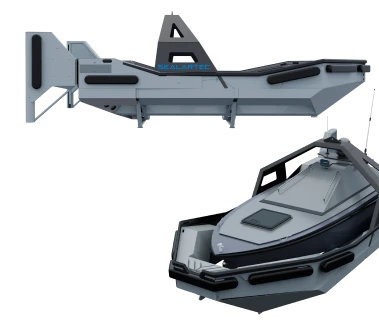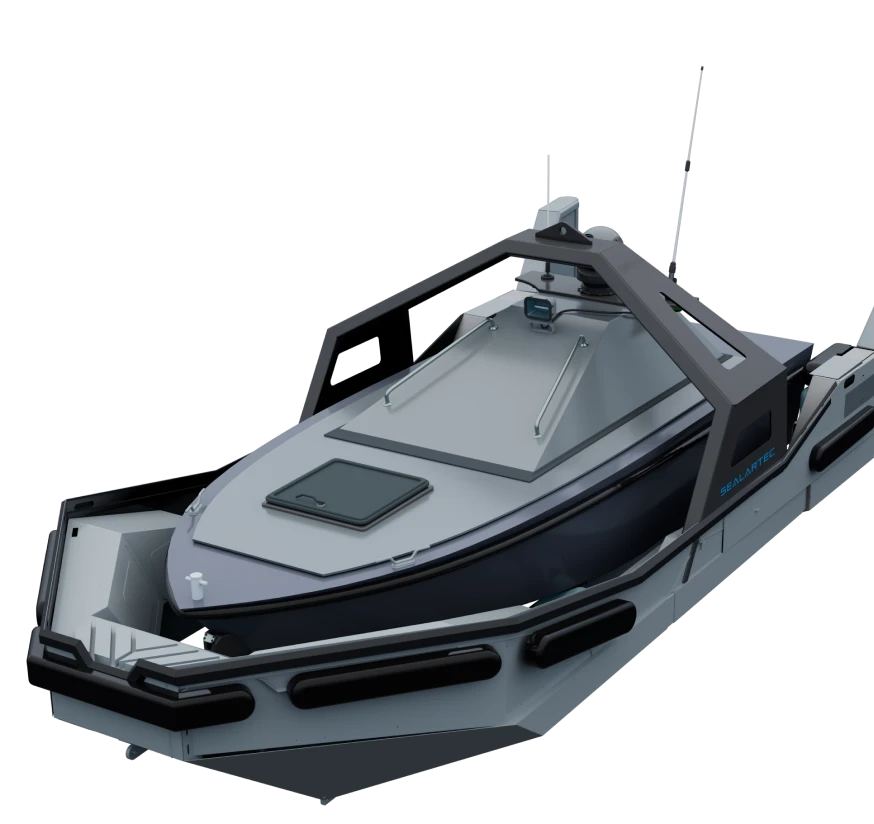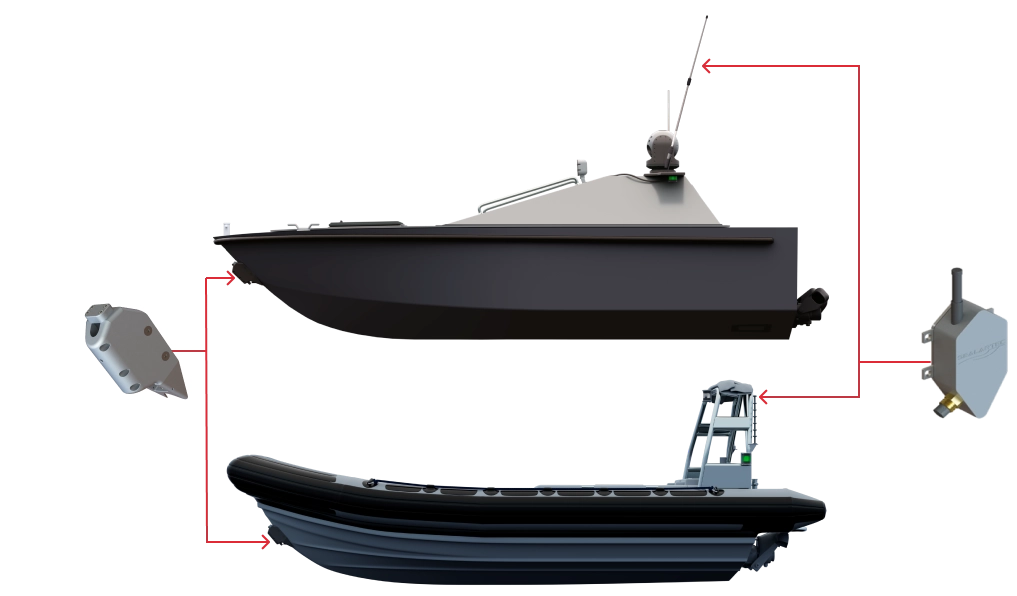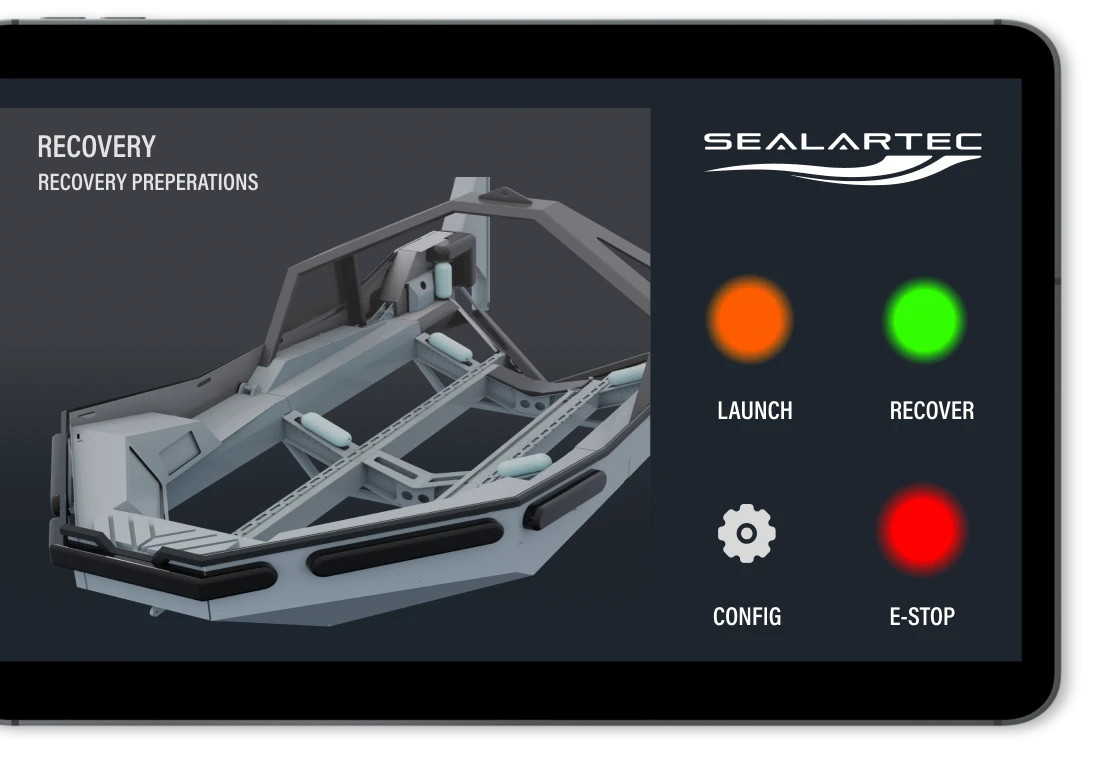ALR-C for
Davit & Crane
Maritime launch and recoveries via cranes or davits are standard practices. ALR-C, a fully autonomous system, streamlines retrievals of USVs and manned boats in varying sea conditions with minimal human intervention.
With rapid capture (<1.5 sec) and hauling (<15 sec) times, ALR-C ensures swift operations. Its fully autonomous capture initiation and recovery sequence, optionally manual, guarantee reliable performance.
Equipped with innovative identification and capture systems, ALR-C performs the entire recovery sequence automatically. As an add-on for ships or rigs, it requires minimal modification, enabling seamless integration on existing or new vessels.
ALR-C
Autonomous Recovery Cradle

Innovative
Auto-Capture
system
Fixed or
retractable Lifting
Structure
Main Processor:
Decision-Making
Algorithm

Innovative
Auto-Capture System
Fixed or Retractable
Lifting Structure
Main Processor:
Decision-Making Algorithm
- Fully Autonomous
- Operational to Sea State 6
- Fits any Boat, any Ship, any Crane
- Fast Recovery < 20 sec
- Add-On Solution

Boat connection unit
Autonomous Recovery Cradle
Bow Capture Unit
- Fits any boat
- Compact Design
- Quick Release
- no need to reinforce boat Structure
- 12V dC Mini Hydraulic Unit

LPS
- Real time localization
- Accurate & Reliable data
- 3 sensing layers combined by data fusion
command & Control

User Friendly
Intuitive user interface touch screen monitor
Intuitive user interface
touch screen monitor
safety
Additional handheld safety
controller with push buttons
Additional Hand Held Safety
controller with push butons
connection
Standalone or connected to ship command and control
Standalone or connected to ship command and control
requirements
Configurable for user requirements
Configurable for user requirements
usv recovery process
Identification & Capture
Match boat speed to cradle
Drive boat to a wide capture zone aft off ALR-C
ALR-C identifies and captures boat autonomously
Boat captured and reduce throttle to zero
Boat hauled onto ALR-C under controlled tension
ALR-C and boat hoisted together to ship deck
the challenge of side recoveries
Side recoveries are commonly practiced in the maritime sector, necessitating a proficient crew both on the boat and the hosting ship. The complexity and risk of the procedure escalate with higher sea states. Relying heavily on human expertise often results in accidents, causing injuries and, at times, casualties. These incidents contribute to restricted operational capability in varying sea conditions, impacting both civilian and defense markets.
This challenge is particularly pronounced for Unmanned Surface Vehicles (USVs). With no crew on board, the primary hindrance lies in connecting the USV to the ship’s crane or davit systems, posing a significant obstacle to the integration of USVs in the maritime domain.
Examples of manned recoveries gone awry include…